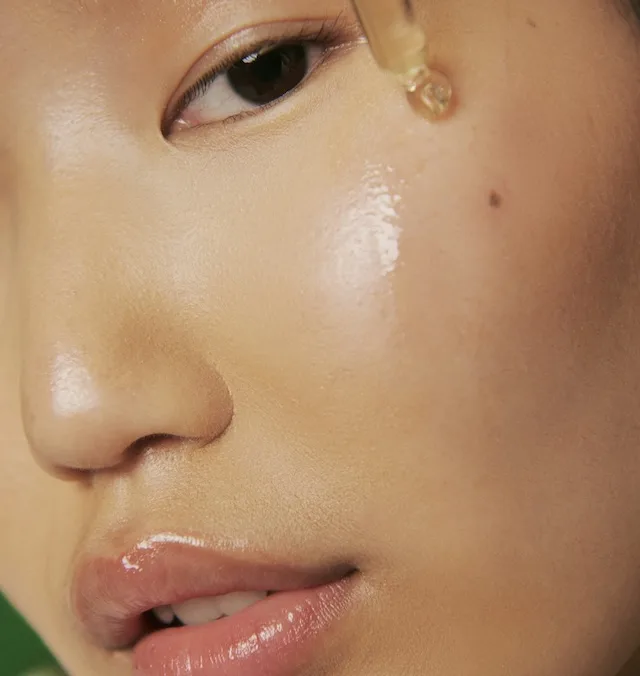Have you noticed any improvements in your skin with GLP-1? You don’t dream… why!
GLP-1 drugs such as Ozempic, Wegovy and Zepbound have gained great popularity over the years due to their strong ability to regulate blood glucose levels and support weight loss. But beyond the management of type 2 diabetes and obesity, researchers are revealing surprising new benefits: connections between GLP-1 and skin health.
From potential improvements to inflammatory skin conditions, to common side effects, to nutritional products that support skin GLP-1 connections, new research reveals how these drugs affect your skin.
What is GLP-1? How does it work?
GLP-1, short for glucagon-like peptide-1, is a hormone that helps suppress blood glucose, insulin and appetite. Medicines that mimic GLP-1 were initially prescribed to treat type 2 diabetes, but have recently become popular for weight loss.
But beyond the pancreas and intestines, GLP-1 receptors, which can also be found in other parts of the body, including the skin, have unexpected effects on skin health and appearance.
Skin side effects: What should you be careful about?

First, let’s talk about the negative effects of GLP-1 drugs on the skin. They are usually mild, but are still worth knowing.
Injection site reaction: Redness, swelling, or itching at the location where the drug is injected. Hypersensitivity reactions: Allergic reactions such as hives and rashes. Pruritus: Chronic itching, ranging from mild to unpleasant. Immune-mediated skin disorders: Some patients with conditions such as psoriasis and Hidradenity inflammation report flares or changes after initiating GLP-1RA medications.
These reactions are not very common, but it is worth cautious if you experience skin discomfort with any of these medications. It is best to talk to your healthcare provider.
The other side of the story: Skin benefits
Interestingly, recent studies have shown that while some people experience side effects, GLP-1 can help improve certain inflammatory skin conditions in others.
Inflammatory disorders such as psoriasis, eczema, and suppurativa are driven by an increased immune system, particularly with the levels of molecules such as TNF-alpha and Interleukin-17 (IL-17). Drugs for GLP-1 also appear to reduce these inflammatory signals. This may explain why some patients see improvements in skin condition during medication.
This anti-inflammatory effect could open the door to future treatments and target chronic skin conditions as well as metabolic issues.
Nutritional support: fiber glp-1 booster flat
If you are not using a prescription or are considering boosting your body’s natural GLP-1 production, the fiber fiber glp-1 booster offers a clean supplement.
Tropical fruit flavor powder mixes nutrients and nutrients that have been shown to support healthy intestinal function and GLP-1 activity. Fibers naturally stimulate GLP-1 secretion in the intestine, as they slow digestion and help regulate glucose absorption. But here, gut and glucose health is linked to skin health:
Stable blood glucose levels help manage inflammation throughout the body, including the skin. Improved digestion and gut health are closely linked to improved skin clarity and skin barrier function. Natural GLP-1 support, like its pharmaceutical cousin, can promote collagen production and repair.
For those who are not ready (or eligible) for the formula GLP-1, fiber fiber offers a gentle, intestinal-friendly option to support metabolism and glow behind the scenes.
Skin regeneration and wound healing
GLP-1 medications can also affect how your skin is repaired and regenerated. Scientists believe it plays a role in collagen production, cell repair and even wound healing, especially for people with diabetes who struggle with tissue repair.
Studies suggest that GLP-1RA may increase angiogenesis (growth of new blood vessels), increase fibroblast activity (cells involved in collagen production), promote wound healing, and promote skin stiffness.
Cosmetic angle: “Ozempic Face” and aesthetic solutions
Of course, the most talked about skin-related effects of GLP-1 Meds are not about inflammation, nor about appearance.
Rapid weight loss in the face in particular can lead to the appearance of a hollow or elderly man known as the “face of the Ozempic.” It’s not harmful, but dramatic fat loss can make some people feel like they’re aging overnight.
As a result, many people are looking to aesthetic solutions such as dermatological fillers, skin accentuating treatments, or collagen stimulation treatments to restore lost amounts.
GLP-1 medications don’t just help you lose weight and control your blood glucose. It is beginning to show positive effects on skin health, especially in terms of inflammation, healing and regeneration.
Side effects such as rashes and itching can occur, but increasing research into the role of GLP-1 in skin health is promising. Whether you are managing diabetes, trying to support weight loss, or simply trying to increase your glow from within, understanding how GLP-1 affects your skin can help you make more informed choices.





